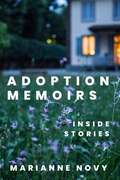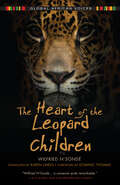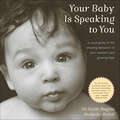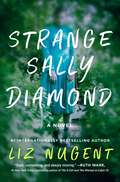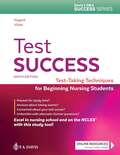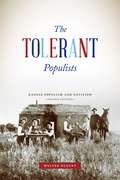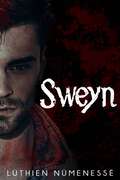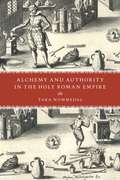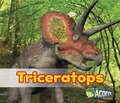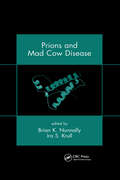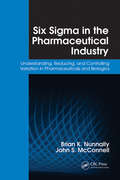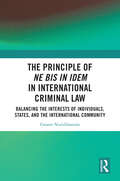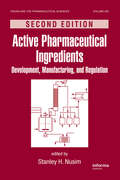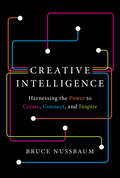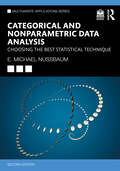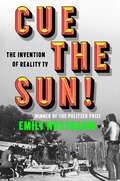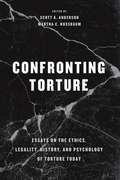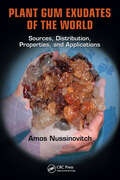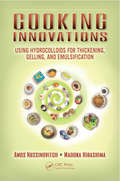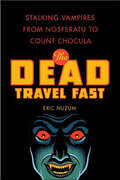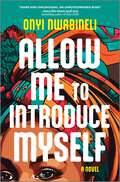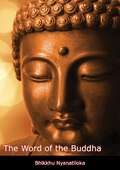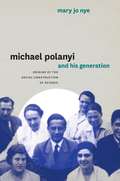- Table View
- List View
I am a Princess
by Chuck NovatkaEvery child is perfect just the way they are, despite how different they may appear.Follow Harper Rose as she reminds us that all children have unique qualities that allow them to contribute and experience the world in extraordinary ways.A lesson reserved not only for children!
Adoption Memoirs: Inside Stories
by Marianne NovyAdoption Memoirs tells inside stories of adoption that popular media miss. Marianne Novy shows how adoption memoirs and films recount not only happy moments, but also the lasting pain of relinquishing a child, the racism and trauma that adoptees such as Jackie Kay and Jane Jeong Trenka experienced, and the unexpected complexities of child-rearing adoptive parents Emily Prager and Jesse Green encountered. Novy considers 45 memoirs, mostly from the twenty-first century, by birthmothers, adoptees, and adoptive parents, about same-race and transracial adoption. These adoptees, she recounts, wanted to learn about their ancestry and appreciated adoptive parents who helped. Birthmother Amy Seek shows why open adoption is not simple, and many other memoirs tell stories that continue past reunion. Adoption Memoirs will enlighten readers who lack experience with adoption and help those looking for a shared experience to also understand adoption from a different standpoint.
The Heart of the Leopard Children (Global African Voices)
by Wilfried N'SondéA nameless young man lives in the housing projects outside of Paris. When he was a child, his parents moved with him from the Congo to France, hoping in vain to escape poverty and violence. His best friend, Drissa, is in a psychiatric hospital and now Mireille, his girlfriend, the woman with whom he has shared his childhood and hopes, has left him to reconnect with her Jewish roots in Israel. During a night out to drown the pain of his heartache, there is a fight with a policeman, the policeman dies, and the young man is arrested and taken to jail. Between police beatings and abrupt interrogations, his memory becomes his sole ally to escape from the exiguous space in which he is confined. Half-conscious and delirious, he reflects on his journey from the land of his ancestors to his life in the projects with Drissa and Mireille. In The Heart of the Leopard Children, N'Sondé explores the themes of love and pain, belonging and uprooting, desire and fear—all with an implacable and irresistible accuracy. Wilfried N'Sondé's first novel awakens the reader with an urban symphony of desire and lost love, attuned to the violence that accompanies the struggle for social ascension and a sense of belonging, and the paralyzing sentiment of betrayal that inhabits a young man caught between traditions and cultures. Awarded the Prix des Cinq Continents de la Francophonie and the Prix Senghor for the originality of his work, the author captures the sounds, rhythms and pleas of a young man who pulls on the alarm from his prison cell to warn against the multiple barriers of confinement that risk the future of certain sectors of French youth today.
Your Baby Is Speaking to You: A Visual Guide to the Amazing Behaviors of Your Newborn and Growing Baby
by Kevin NugentFrom an international expert on infant-parent communication, a rich and accessible gift book on baby “language,” gorgeously illustrated with forty black-and-white photographs.Through intimate access to babies and their families, Dr. Kevin Nugent and acclaimed photographer Abelardo Morell capture the amazingly precocious communications strategies babies demonstrate from the moment they are born.Your Baby Is Speaking to You illustrates the full range of behaviors—early smiling to startling, feeding to sleeping, listening to your voice and recognizing your face. The newest research—including information on subtle and fleeting behaviors not seen or explained in any other book—illuminates the meaning of the things babies do that concern and delight new parents: – the language of yawning – the rich range of cries, and how to understand their meanings – baby’s earliest “sleep smiles” and sleep states, and what they signify.Your Baby Is Speaking To You delivers the information parents crave in gentle, accessible style while giving parents the confidence they need to respond to their own baby’s way of communicating during the very first astonishing days and the months beyond.
Strange Sally Diamond
by Liz Nugent&“Shocking, disturbing, and utterly original.&” —Paula Hawkins, #1 New York Times bestselling author This &“haunting and poignant tale, one that won&’t be easy to forget any time soon&” (Mystery and Suspense Magazine), follows an enigmatic woman confronting her unknown past—from internationally bestselling author Liz Nugent.Reclusive Sally Diamond is thrust into the media spotlight when she tries to incinerate her dead father, causing widespread outrage. Now she&’s the center of attention, not only from hungry reporters and police detectives, but also a sinister voice from a past she does not remember. As she begins to discover the repressed memories of her horrific early childhood, Sally steps into the world for the first time, making new friends, big decisions, and learning that people don&’t always mean what they say. But who is the man observing Sally from the other side of the world, and why does he call her Mary? And why does her new neighbor seem to be obsessed with her? Sally&’s trust issues are about to be severely challenged in this &“truly incredible reading experience&” (Lisa Jewell, #1 New York Times bestselling author).
Test Success: Test-taking Techniques For Beginning Nursing Students
by Patricia M. Nugent Barbara A. VitaleBuild confidence and improve test scores. Success in nursing school starts here. A complete review of core concepts 900 questions (Alternate format, too!) Test-taking hints and rationales for correct and incorrect answers A complete review of core concepts, plus 900 questions based on the latest NCLEX© test plan build confidence and improve test scores from the beginning of nursing school. Master tricky alternate-format questions, even SATA (select all that apply), and develop efficient studying skills with test-taking tips and rationales for correct and incorrect responses. Purchase this title NEW and get 150 additional questions online plus all of the questions in the book.
The Tolerant Populists: Kansas Populism and Nativism
by Walter NugentA political movement rallies against underregulated banks, widening gaps in wealth, and gridlocked governments. Sound familiar? More than a century before Occupy Wall Street, the People’s Party of the 1890s was organizing for change. They were the original source of the term “populism,” and a catalyst for the later Progressive Era and New Deal. Historians wrote approvingly of the Populists up into the 1950s. But with time and new voices, led by historian Richard Hofstadter, the Populists were denigrated, depicted as demagogic, conspiratorial, and even anti-Semitic. In a landmark study, Walter Nugent set out to uncover the truth of populism, focusing on the most prominent Populist state, Kansas. He focused on primary sources, looking at the small towns and farmers that were the foundation of the movement. The result, The Tolerant Populists, was the first book-length, source-based analysis of the Populists. Nugent’s work sparked a movement to undo the historical revisionism and ultimately found itself at the center of a controversy that has been called “one of the bloodiest episodes in American historiography.” This timely re-release of The Tolerant Populists comes as the term finds new currency—and new scorn—in modern politics. A definitive work on populism, it serves as a vivid example of the potential that political movements and popular opinion can have to change history and affect our future.
Sweyn: Soulless warrior (Clan Brácaros #3)
by Lúthien NúmenessëHe, a warrior with a terrible curse. She, a lonely star in search of real feelings. Three disasters to prevent. Two tormented souls. A promise of blood. Sweyn has always lived in uncertainty about his destiny, for he knows that from the beginning his existence was not meant to be. Now the Gods test him again, driving him away from his clan, cursing him once more, leaving him adrift. However, the Deities will not be satisfied with punishing him alone, but anyone who loves him. Faarah West is a young woman who has it all; fame, fortune, a promising future. But her destiny takes a 180-degree turn when, during her tour, she suffers a terrible accident, losing everything, even her life. Now she has nothing left, except her memories, priceless memories that she must hold on to tightly so as not to fade away. An encounter that will mark their destinies, a hope that never dies, and an end that not even the Gods can predict. Will be possible for them to choose their own path?
Alchemy and Authority in the Holy Roman Empire (National Society For The Study Of Education Yearbooks Ser.)
by Tara NummedalWhat distinguished the true alchemist from the fraud? This question animated the lives and labors of the common men—and occasionally women—who made a living as alchemists in the sixteenth- and seventeenth-century Holy Roman Empire. As purveyors of practical techniques, inventions, and cures, these entrepreneurs were prized by princely patrons, who relied upon alchemists to bolster their political fortunes. At the same time, satirists, artists, and other commentators used the figure of the alchemist as a symbol for Europe’s social and economic ills. Drawing on criminal trial records, contracts, laboratory inventories, satires, and vernacular alchemical treatises, Alchemy and Authority in the Holy Roman Empire situates the everyday alchemists, largely invisible to modern scholars until now, at the center of the development of early modern science and commerce. Reconstructing the workaday world of entrepreneurial alchemists, Tara Nummedal shows how allegations of fraud shaped their practices and prospects. These debates not only reveal enormously diverse understandings of what the “real” alchemy was and who could practice it; they also connect a set of little-known practitioners to the largest questions about commerce, trust, and intellectual authority in early modern Europe.
Little Indiana: Small Town Destinations
by Jessica NunemakerWhere was James Dean's hometown? What do A. J. Foyt, Mario Andretti, and Al Unser have in common besides winning the Indianapolis 500? Where was the world's first theme park? Find these answers and more in Little Indiana: Small Town Destinations. Featuring towns of 15,000 or fewer inhabitants, Little Indiana explores where to eat, stay, play, and shop in over 90 small towns. After six years of traveling the state in search of amazing local experiences, blogger and TV host Jessica Nunemaker shares a treasure trove of what to expect in Hoosier small towns. Perfect for any length of excursion—day or weekend—the book is organized by region and town and provides travelers easy access to information found nowhere else. From wineries to antique shops, alpaca farms to chocolate stores, unique attractions are awaiting discovery. Full-color images showcase specialty stores, mouth-watering meals, and exciting attractions tucked off the beaten path. Proof that there's always something to do in a small town, this book is the perfect way to kick-start your next Indiana adventure!
Triceratops (All About Dinosaurs Ser.)
by Daniel NunnThis book takes a very simple look at the Triceratops dinosaur, examining what it looked like, what it ate, how it behaved, and its special skills and features such as the horns on its head. The book also discusses how we know about Triceratops today, showing where fossils are found and how scientists put them together.
Prions and Mad Cow Disease
by Brian K. Nunnally Ira S. KrullThe alarm sounded by Canada's confirmed case of bovine spongiform encephalopathy (BSE) has reaffirmed the exigency of establishing improved safeguards and more aggressive surveillance protocols in North America and around the world. Research converging on the probable causative agent--prion proteins--calls for intensive assessment of the headway gained in tracing prions, testing for transmissible neurodegenerative diseases, and developing methods for cornering the epidemic. With an illustrious panel of 36 international contributors, this timely book marshals techniques for prion protein assay and diagnosis of transmissible spongiform encephalopathies (TSEs).
Six Sigma in the Pharmaceutical Industry: Understanding, Reducing, and Controlling Variation in Pharmaceuticals and Biologics
by Brian K. Nunnally John S. McConnellSix Sigma in the Pharmaceutical Industry is the first book to introduce the fundamentals of Six Sigma, examine control chart theory and practice, and explain the concept of variation management and reduction applied specifically to the pharmaceutical industry. The first half lays out a conceptual framework for understanding variation, while the second half introduces control chart theory and practice. Using case studies and statistics, the book illustrates the concepts and explains their application to actual workplace improvements. Providing the basis for a complete operating philosophy, this book focuses on core concepts and their implementation to improve the existing products and processes in the pharmaceutical industry.
The Principle of ne bis in idem in International Criminal Law: Balancing the Interests of Individuals, States, and the International Community
by Gaiane NuridzhanianThe legal principle of ne bis in idem proclaims that no person shall be tried twice for the same matter. This principle is important in theory and practice, as it safeguards a fundamental individual interest and spares the accused the burden of a repeat trial. This book provides a comprehensive examination of the ne bis in idem principle in international criminal law. Readers will find a detailed account of ne bis in idem rules in the law and practice of the International Criminal Court and other international criminal courts. The book also examines international law ne bis in idem rules that govern the domestic prosecution of international crimes. The book will be a valuable resource for researchers, academics and policy-makers working in the areas of International Criminal Law and International Human Rights law. It will be of particular use to those interested in defense rights, admissibility of cases before international criminal courts, and issues arising from prosecution of international crimes in multiple criminal jurisdictions.
Active Pharmaceutical Ingredients: Development, Manufacturing, and Regulation, Second Edition (ISSN)
by Stanley H. NusimTo successfully bring an Active Pharmaceutical Ingredient (API) to market, many steps must be followed to ensure compliance with governmental regulations. This book is an unparalleled guide to the development, manufacturing, and regulation of the preparation and use of APIs globally. This secoond edition brings readers up-to-date with the quality control regulations for APIs that have been added or amended since the first edition. These updates help ensure that pharmaceutical professionals and drug manufacturers meet the established and required guidelines set forth by the US and international regulatory industries.
Creative Intelligence: Harnessing the Power to Create, Connect, and Inspire
by Bruce NussbaumOffering insights from the spheres of anthropology, psychology, education, design, and business, Creative Intelligence by Bruce Nussbaum, a leading thinker, commentator, and curator on the subjects of design, creativity, and innovation, is first book to identify and explore creative intelligence as a new form of cultural literacy and as a powerful method for problem-solving, driving innovation, and sparking start-up capitalism.Nussbaum investigates the ways in which individuals, corporations, and nations are boosting their creative intelligence — CQ—and how that translates into their abilities to make new products and solve new problems. Ultimately, Creative Intelligence shows how to frame problems in new ways and devise solutions that are original and highly social. Smart and eye opening, Creative Intelligence: Harnessing the Power to Create, Connect, and Inspire illustrates how to connect our creative output with a new type of economic system, Indie Capitalism, where creativity is the source of value, where entrepreneurs drive growth, and where social networks are the building blocks of the economy.
Categorical and Nonparametric Data Analysis: Choosing the Best Statistical Technique (Multivariate Applications Series)
by E. Michael NussbaumNow in its second edition, this book provides a focused, comprehensive overview of both categorical and nonparametric statistics, offering a conceptual framework for choosing the most appropriate test in various scenarios. The book’s clear explanations and Exploring the Concept boxes help reduce reader anxiety. Problems inspired by actual studies provide meaningful illustrations of these techniques. Basic statistics and probability are reviewed for those needing a refresher with mathematical derivations placed in optional appendices.Highlights include the following:• Three chapters co-authored with Edgar Brunner address modern nonparametric techniques, along with accompanying R code.• Unique coverage of both categorical and nonparametric statistics better prepares readers to select the best technique for particular research projects.• Designed to be used with most statistical packages, clear examples of how to use the tests in SPSS, R, and Excel foster conceptual understanding.• Exploring the Concept boxes integrated throughout prompt students to draw links between the concepts to deepen understanding.• Fully developed Instructor and Student Resources featuring datasets for the book's problems and a guide to R, and for the instructor PowerPoints, author's syllabus, and answers to even-numbered problems.Intended for graduate or advanced undergraduate courses in categorical and nonparametric statistics taught in psychology, education, human development, sociology, political science, and other social and life sciences.
Cue the Sun!: The Invention of Reality TV
by Emily NussbaumThe rollicking saga of reality television—an ambitious cultural history of America&’s most influential, most divisive artistic phenomenon, from the Pulitzer Prize–winning New Yorker writer&“Written with a storyteller&’s verve, a journalist&’s skepticism, a critic&’s astuteness, and a fan&’s loving eye.&”—Michael Chabon, author of The Amazing Adventures of Kavalier and ClayWho invented reality television, the world&’s most dangerous pop-culture genre? And why can&’t we look away? In this revelatory, deeply reported account of the rise of &“dirty documentary&”—from its contentious roots in radio to the ascent of Donald Trump—Emily Nussbaum unearths the origin story of the genre that ate the world, as told through the lively voices of the people who built it. At once gimlet-eyed and empathetic, Cue the Sun! explores the morally charged, funny, and sometimes tragic consequences of the hunt for something real inside something fake.In sharp, absorbing prose, Nussbaum traces the jagged fuses of experimentation that exploded with Survivor at the turn of the millennium. She introduces the genre&’s trickster pioneers, from the icy Allen Funt to the shambolic Chuck Barris; Cops auteur John Langley; cynical Bachelor ringmaster Mike Fleiss; and Jon Murray and Mary-Ellis Bunim, the visionaries behind The Real World—along with dozens of stars from An American Family, The Real World, Big Brother, Survivor, and The Bachelor. We learn about the tools of the trade—like the Frankenbite, a deceptive editor&’s best friend—and ugly tales of exploitation. But Cue the Sun! also celebrates reality&’s peculiar power: a jolt of emotion that could never have come from a script.What happened to the first reality stars, the Louds—and why won&’t they speak to the couple who filmed them? Which serial killer won on The Dating Game? Nussbaum explores reality TV as a strike-breaker, the queer roots of Bravo, the dark truth behind The Apprentice, and more. A shrewd observer who adores television, Nussbaum is the ideal voice for the first substantive history of the genre that, for better or worse, made America what it is today.
Confronting Torture: Essays on the Ethics, Legality, History, and Psychology of Torture Today
by Martha C. Nussbaum Scott A. AndersonTorture has lately become front page news, featured in popular movies and TV shows, and a topic of intense public debate. It grips our imagination, in part because torturing someone seems to be an unthinkable breach of humanity—theirs and ours. And yet, when confronted with horrendous events in war, or the prospect of catastrophic damage to one’s own country, many come to wonder whether we can really afford to abstain entirely from torture. Before trying to tackle this dilemma, though, we need to see torture as a multifaceted problem with a long history and numerous ethical and legal aspects.Confronting Torture offers a multidisciplinary investigation of this wrenching topic. Editors Scott A. Anderson and Martha C. Nussbaum bring together a diversity of scholars to grapple with many of torture’s complexities, including: How should we understand the impetus to use torture? Why does torture stand out as a particularly heinous means of war-fighting? Are there any sound justifications for the use of torture? How does torture affect the societies that employ it? And how can we develop ethical or political bulwarks to prevent its use? The essays here resist the temptation to oversimplify torture, drawing together work from scholars in psychology, history, sociology, law, and philosophy, deepening and broadening our grasp of the subject. Now, more than ever, torture is something we must think about; this important book offers a diversity of timely, constructive responses on this resurgent and controversial subject.
Plant Gum Exudates of the World: Sources, Distribution, Properties, and Applications
by Amos NussinovitchConsidered magicians of the ingredient world, gums (hydrocolloids) are used in a variety of food applications. They possess excellent thickening, binding, emulsifying, suspension, and viscosity properties. The first comprehensive reference produced on gums in 60 years, this work is organized by taxonomy. Each entry contains the botanical name and synonyms of the tree from which it is exuded, common names, geographic distribution, chemical characteristics and structural features, physical properties, and industrial and food applications. The uses of other parts of the trees from which the gums originate are also detailed. Entries are illustrated with color photos and line drawings.
Cooking Innovations: Using Hydrocolloids for Thickening, Gelling, and Emulsification
by Amos Nussinovitch Madoka HirashimaThis volume explores unique applications of hydrocolloids in the kitchen. Starting with a brief description of the chemical and physical nature of the hydrocolloid, its manufacture, and its biological/toxicological properties, the emphasis is on practical information for both the professional chef and amateur cook. Each chapter includes recipes demonstrating the particular hydrocolloid's unique abilities in cooking. Several formulations were chosen specifically for food technologists, who will be able to manipulate them for large-scale use or as a starting point for novel industrial formulations.
The Dead Travel Fast: Stalking Vampires from Nosferatu to Count Chocula
by Eric NuzumThe undead are everywhere. They're not just in movies and books, but in commercials, fetish clubs, and even in your breakfast cereal. Bloodsuckers have become some of the most recognizable bad guys in the modern world, and Eric Nuzum wanted to find out why. He was willing to do whatever it took —even drinking his own blood—in his quest to understand the vampire phenomenon. And he found the answer in Goth clubs, darkened parks, haunted houses, and . . . chain restaurants. In The Dead Travel Fast, Nuzum delivers a far-reaching look at vampires in pop culture from Bram to Bela to Buffy, and at what vampires and vampirism have come to mean to us today. And the blood? Let's just say it doesn't go with eggs.
Allow Me to Introduce Myself: A Novel
by Onyi NwabineliHer life. Her rules. Finally.Anuri Chinasa has had enough. And really, who can blame her? She was the unwilling star of her stepmother&’s social media empire before &“momfluencers&” were even a thing. For years, Ophelia documented every birthday, every skinned knee, every milestone and meltdown for millions of strangers to fawn over and pick apart.Now, at twenty-five, Anuri is desperate to put her way-too-public past behind her and start living on her own terms. But it&’s not going so great. She can barely walk down the street without someone recognizing her, and the fraught relationship with her father has fallen apart. Then there&’s her PhD application (still unfinished) and her drinking problem (still going strong). When every detail of her childhood was so intensely scrutinized, how can she tell what she really wants?Still, Ophelia is never far away and has made it clear she won&’t go down without a fight. With Noelle, Anuri&’s five-year-old half sister now being forced down the same path, Anuri discovers she has a new mission in life…To take back control of the family narrative.Through biting wit and heartfelt introspection, this darkly humorous story dives deep into the deceptive allure of a picture-perfect existence, the overexposure of children in social media and the excitement of self-discovery.
The Word of the Buddha: An Outline Of The Ethico-philosophical System Of The Buddha, In The Words Of The Pali Canon (1907)
by Bhikkhu NyanatilokaEmbark on a profound journey into the heart of Buddhist teachings with Bhikkhu Nyanatiloka’s The Word of the Buddha. This seminal work offers a clear and comprehensive presentation of the core doctrines and practices of Buddhism, making the profound wisdom of the Buddha accessible to readers of all backgrounds.Bhikkhu Nyanatiloka, a distinguished scholar and monk, meticulously distills the essential teachings of the Buddha from the vast Pali Canon, the authoritative scriptures of Theravada Buddhism. The Word of the Buddha presents these teachings in a systematic and organized manner, providing an invaluable resource for both newcomers and seasoned practitioners seeking to deepen their understanding of the Buddha’s path.The book covers fundamental aspects of Buddhist doctrine, including the Four Noble Truths, the Noble Eightfold Path, the doctrine of Dependent Origination, and the principles of ethical conduct, meditation, and wisdom. Nyanatiloka’s lucid explanations and thoughtful commentary illuminate the profound and transformative nature of these teachings, offering practical guidance for integrating them into daily life.The Word of the Buddha is more than just a compilation of texts; it is a guide to spiritual awakening and liberation. Nyanatiloka’s insightful approach emphasizes the practical application of the Buddha’s teachings, encouraging readers to engage in self-reflection and practice to cultivate inner peace and understanding.This authoritative text is an essential addition to the library of anyone interested in Buddhism, spirituality, and the pursuit of truth. Bhikkhu Nyanatiloka’s The Word of the Buddha stands as a timeless testament to the enduring relevance and profound depth of the Buddha’s message, inviting readers to explore the path to enlightenment.
Michael Polanyi and His Generation: Origins of the Social Construction of Science
by Mary Jo NyeIn Michael Polanyi and His Generation, Mary Jo Nye investigates the role that Michael Polanyi and several of his contemporaries played in the emergence of the social turn in the philosophy of science. This turn involved seeing science as a socially based enterprise that does not rely on empiricism and reason alone but on social communities, behavioral norms, and personal commitments. Nye argues that the roots of the social turn are to be found in the scientific culture and political events of Europe in the 1930s, when scientific intellectuals struggled to defend the universal status of scientific knowledge and to justify public support for science in an era of economic catastrophe, Stalinism and Fascism, and increased demands for applications of science to industry and social welfare. At the center of this struggle was Polanyi, who Nye contends was one of the first advocates of this new conception of science. Nye reconstructs Polanyi’s scientific and political milieus in Budapest, Berlin, and Manchester from the 1910s to the 1950s and explains how he and other natural scientists and social scientists of his generation—including J. D. Bernal, Ludwik Fleck, Karl Mannheim, and Robert K. Merton—and the next, such as Thomas Kuhn, forged a politically charged philosophy of science, one that newly emphasized the social construction of science.

